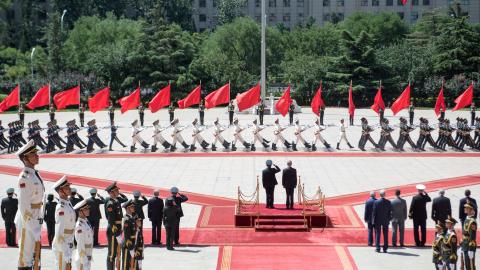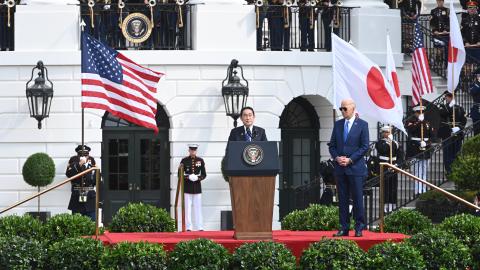The Pentagon released its 2025 budget last week, and the implications for U.S. national security are sobering. Not because the Biden administration spends too little on defense, but because the budget shows a military reaching its limits. After a decade of optimizing it to stop a Chinese invasion of Taiwan, defense officials of both parties have rendered the U.S. force too expensive to grow and too small to meet the needs of America and its allies. The U.S. military needs a new approach to hedge against the worst-case scenarios China could impose.
How we got here is not a mystery. China has geographic, strategic and financial advantages over the United States that it could exploit in a fight over Taiwan. An invasion would happen in China’s backyard, allowing it to use homeland-based missiles and aircraft against Taiwan’s defenders. Without the U.S. military’s global responsibilities, China can focus its forces on the Western Pacific. And with younger ships and aircraft and a robust manufacturing base, China can grow its force at lower cost than the U.S.
Coming off successes in long-range precision strike warfare during the 1990s and 2000s, the Pentagon applied the same model to defending Taiwan. But China’s advantages increasingly make the tactics U.S. forces used in Kosovo or Iraq nearly impossible to execute at the scale needed to stop an invasion.
The result has been a shrinking U.S. force being boiled down to its most survivable and lethal elements—submarines, stealth bombers and long-range missiles—while everything else is sacrificed on the altar of defeating a Taiwan invasion. Last year, the U.S. Navy and Marines were unable to aid Turkey’s earthquake victims or evacuate U.S. citizens from South Sudan due to a shortage of amphibious warships. Today, destroyers designed to stop Soviet and Chinese submarines or supersonic missiles are being worn out to protect shipping against Houthi drones because there are no frigates to do the job.
The other contributor to the U.S. military’s growing inability to answer the call is defense officials’ insistence on a one-size-fits-all force. To allow units in one geographic region to surge to another and standardize training and equipment, defense officials avoid specialized forces. But with China as the Pentagon’s “pacing challenge,” everything it buys needs to be relevant in countering Beijing, which generally means in an invasion of Taiwan.
There is a way out of this strategic cul-de-sac. The U.S. military could break tradition and field specialized units designed to hedge against high-consequence but low-probability situations that would otherwise dominate its force planning.
Taking advantage of widely available aerial, naval and undersea drones, “hedge forces” could deny access to an aggressor. Ukraine used this approach to sink half Russia’s Black Sea Fleet and restore its maritime trade while Houthi drones under and above the water have upended worldwide shipping traffic with their attacks across the Red Sea. The U.S. military should exploit these same technologies to disrupt or slow a Chinese invasion. Tangled up in a hedge force’s drones, China’s troop transports and their escorts would also be easier targets for U.S. missiles.
The Defense Department is already pursuing elements of what could be a future hedge force for Taiwan through initiatives by the Defense Innovation Unit and the U.S. Pacific Fleet. Expanding these efforts that tap today’s unmanned system and software technologies could allow the Pentagon to field a hedge force within a year, rather than waiting a decade or more for the next generation of missiles, submarines or bombers to arrive.
More important, a hedge force could help defense leaders arrest the continued morphing of the U.S. military into a “one-trick pony” optimized to fight a short invasion adjacent to a peer opponent’s homeland but without the capacity for other scenarios or crisis response elsewhere.
For example, China’s intensifying interference in Taiwan shipping traffic suggests that a blockade or quarantine is its most likely path to pressure Taiwan militarily. But already overstretched responding to threats in the Middle East, the U.S. fleet would be hard-pressed to protect Taiwan’s sea lanes.
The U.S. military has been the deterrent against great power war and global first responder for nearly a century. It is at risk of losing both roles unless defense officials embrace the idea that a general-purpose U.S. force can no longer dominate every situation. The Pentagon needs to build special tools for special situations. Otherwise, an already unstable world will only grow more chaotic.














